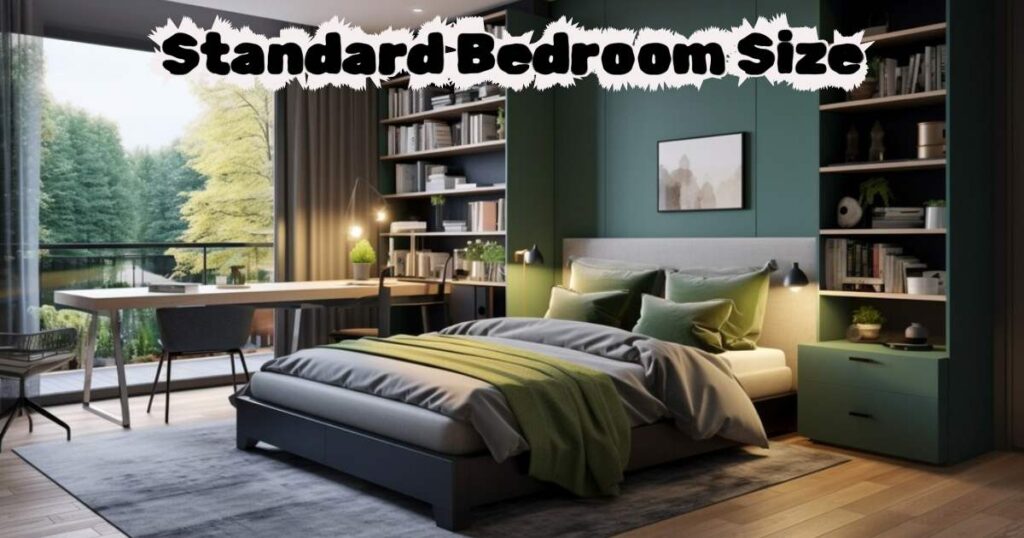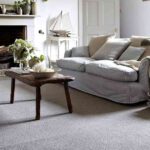Transforming your bedroom into a comfortable haven begins with understanding standard sizes. As the most intimate space in your home, your bedroom should be a relaxing sanctuary. However, balancing style and functionality can be tricky without knowing the ideal dimensions and clearances.
This guide covers standard bedroom, bed, door sizes, lighting recommendations, and furniture clearances – equipping you with the knowledge to maximize space and create your dream personal oasis.
Whether renovating or starting fresh, you’ll learn to optimize every inch and craft a true bedroom haven tailored to your needs.
Master Bedroom size vs. Standard Bedroom size: What’s the Difference?
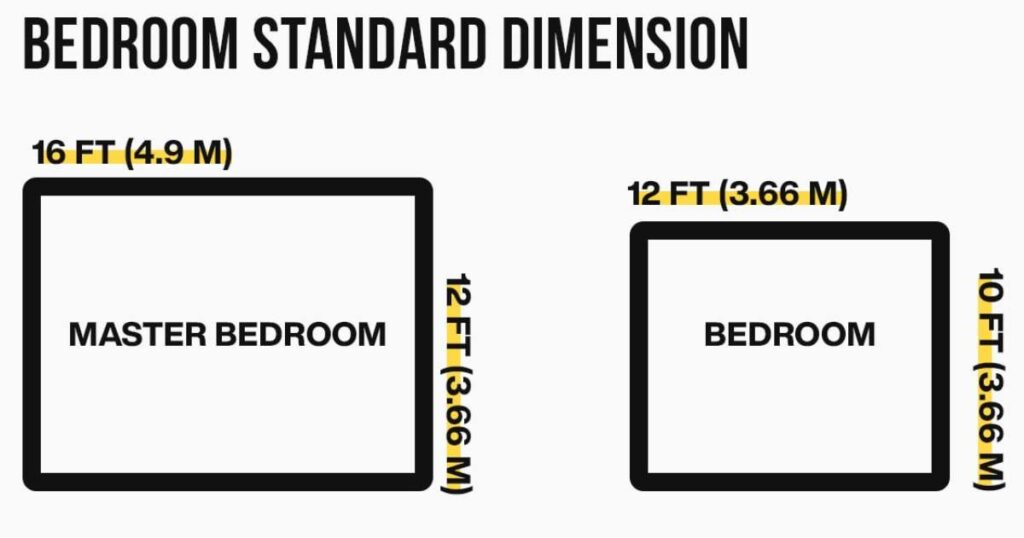
Standard Master Bedroom Size: A Private Oasis
A master bedroom is typically the largest and most luxurious sleeping area in a home, designed to be a private oasis where you can escape the day’s stresses. Unlike a standard bedroom, a master bedroom serves multiple purposes beyond just sleeping.
It’s a retreat where you can relax, read, or simply unwind in comfort. The minimum recommended size for a master bedroom without closets is 12′ (3.6 meters) by 16′ (4.9 meters).
This spacious layout allows for a king or queen-sized bed, seating area, dressers, nightstands, and even a small desk or table. Additionally, master bedrooms often feature walk-in closets or wardrobes, providing ample storage space for your belongings.
Standard Bedroom Size: Functional Sleeping Space
In contrast, a standard bedroom is a more compact space primarily designed for sleeping.
With a minimum size of 10′ (3 meters) by 12′ (3.6 meters) without closets, a standard bedroom typically accommodates a bed, a wardrobe or closet, and perhaps a nightstand or dresser.
While it may lack the luxurious amenities of a master bedroom, a well-designed standard bedroom can still be a cozy and functional retreat for restful slumber.
Standard Bed Size: The Key to Maximizing Space
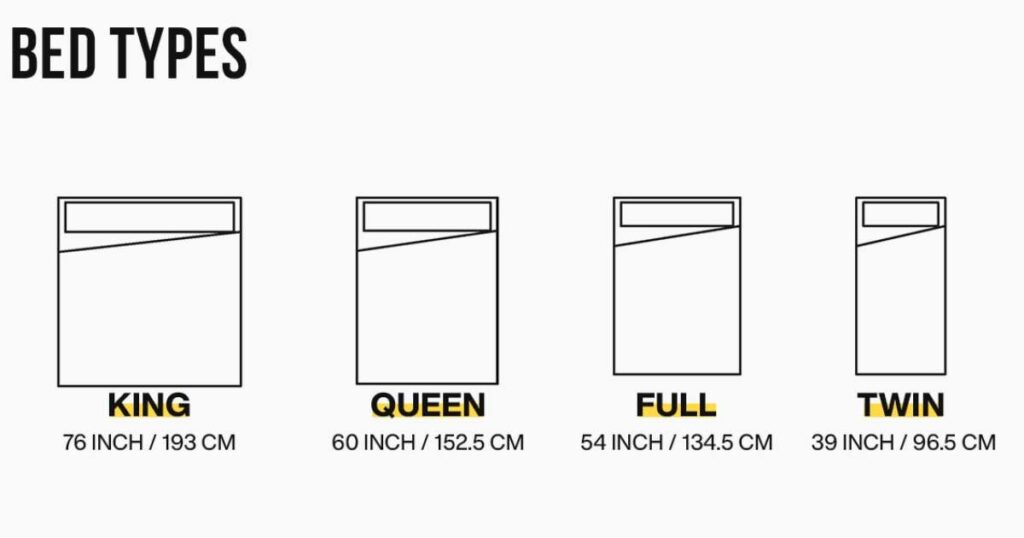
Bed’s Width
When selecting the appropriate bed size for your bedroom, the width is a crucial consideration. Twin beds, measuring 39 inches (96.5 cm) wide, are primarily designed for single occupants.
For couples or those who prefer more sleeping space, a full bed measuring 54 inches (134.5 cm) wide or a queen bed at 60 inches (152.5 cm) wide are popular choices.
If you truly desire a spacious sleeping area, a king-sized bed with a width of 76 inches (193 cm) can provide ample room for two people to stretch out comfortably.
Bed’s Length
The standard bed length is 78 inches (203.5 cm), suitable for most individuals. However, if you’re taller than 6 feet 5 inches (196 cm), many bed manufacturers recommend opting for an 83-inch (210 cm) long bed to ensure your feet don’t hang off the edge.
Ideally, there should be a 4-inch (10 cm) clearance between your head and the headboard, as well as between your feet and the footboard, for optimal comfort.
Bed’s Height
The height of a bed can vary depending on the brand and model, but generally, a range of 22 to 24 inches (55 to 60 cm) is considered an ideal height for most individuals.
However, if you prefer to sit on the edge of the bed frequently, a lower height of 18 to 20 inches (45 to 50 cm) may be more comfortable for seating.
It’s also important to consider the thickness of your mattress, as some mattresses can be thicker than others, affecting the overall height of the bed.
Standard Bedroom Door Size: A Key Element of Functionality
Door’s Minimum Width
When designing or remodeling a bedroom, it’s crucial to consider the standard door size to ensure functionality and accessibility.
The minimum standard width for a bedroom door is 30 inches (76 cm), which allows for easy movement of furniture and provides ample clearance for wheelchair users or individuals with mobility aids.
Door’s Minimum Height
Similarly, the minimum standard height for a bedroom door is 80 inches (203 cm). This height ensures that even taller individuals can comfortably pass through the doorway without the need to duck or stoop.
Adhering to these standard door sizes not only enhances the functionality of your bedroom but also contributes to an overall sense of spaciousness and comfort.
Bedroom’s Lighting Recommendations
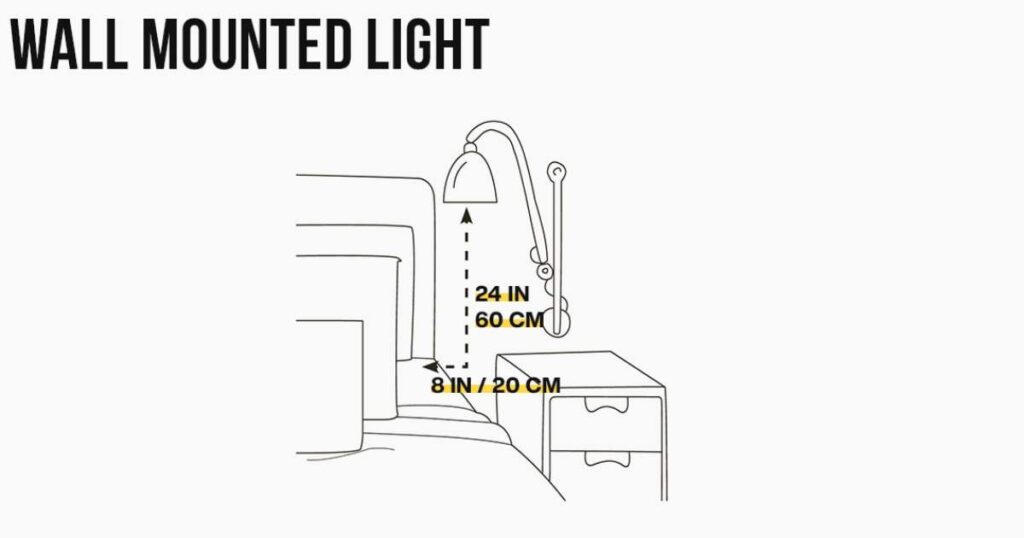
90% you will use wall-mounted light
Proper lighting is essential for creating a cozy and functional bedroom environment. While the specific lighting requirements may vary based on your needs (such as reading in bed or getting ready for the day), wall-mounted lights are a popular and practical choice for most bedrooms.
Approximately 90% of bedrooms utilize wall-mounted lights, as they provide focused illumination without taking up valuable floor or surface space. When installing wall-mounted lights, it’s important to consider the height and placement relative to your bed and mattress.
As a general guideline, measure 8 inches (20 cm) from the edge of the mattress and 24 inches (60 cm) up from that point. This placement should provide optimal lighting for reading or other activities while minimizing glare and discomfort.
Bedside Standard Height
The height of your bedside table or nightstand should be determined by the height of your bed, including the mattress. For optimal convenience and accessibility, the bedside table should be positioned at the same height as the top of the mattress.
This alignment allows you to easily reach for items like a lamp, book, or glass of water without straining or stretching.
The standard range for bedside table heights is between 20 and 30 inches (50 and 70 cm), accommodating most bed sizes and mattress thicknesses.
Headboard Standard Height
The headboard plays a functional and aesthetic role in your bedroom design. To protect the wall behind your bed and prevent pillows from falling off, it’s recommended that the headboard be at least 8 inches (20 cm) higher than the top of the mattress.
This added height not only provides a comfortable backrest but also creates a visually appealing and cohesive look for your bedroom.
Movement Clearance
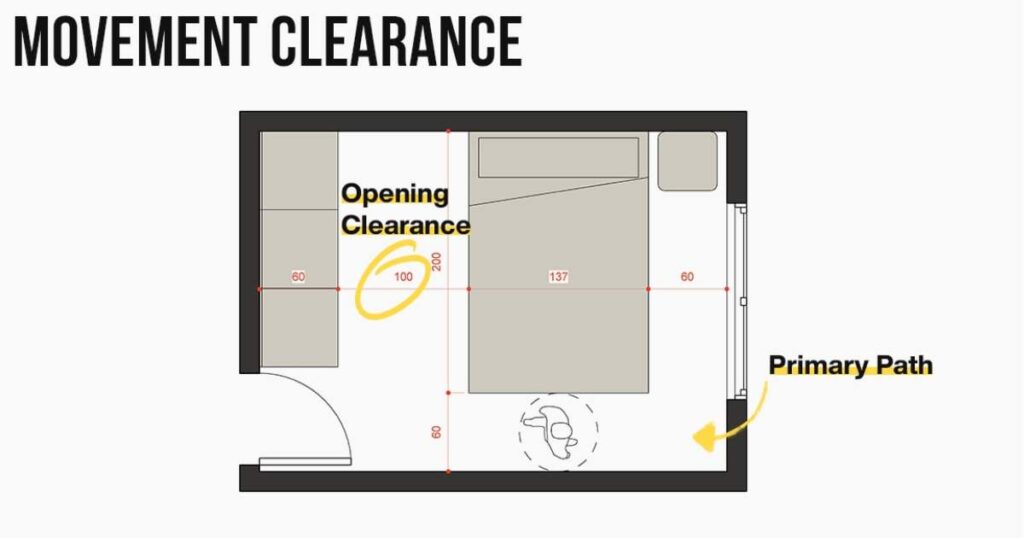
Bed’s Clearance:
Ensuring adequate clearance around your bed and other furniture is crucial for creating a comfortable and functional bedroom space.
For any bed, whether a twin, full, queen, or king size, it’s recommended to have at least 24 inches (60 centimeters) of space on one side.
This clearance allows for easy movement and access to both sides of the bed. On the less-used side of a double bed, a minimum of 12 inches (30 centimeters) of clearance is acceptable.
Other Furniture’s Clearance:
In addition to the bed clearance, consider the following guidelines for other furniture in your bedroom:
- Allocate 42 inches (100 centimeters) of space at one side or the foot of the bed for a closet or wardrobe.
- Provide 36 inches (90 centimeters) of clearance in front of dressers or chests of drawers for easy access.
- Maintain 24 inches (60 centimeters) for primary traffic paths, such as the route from the door to the dresser.
- Leave 6 inches (15 centimeters) between the side of the bed and the side of the dresser or chest.
Remember, if your bedroom has doors that could potentially open and hit the bed or other furniture, it’s advisable to provide even more clearance in those areas.
FAQ’s
What is the minimum recommended size for a master bedroom without closets?
The minimum recommended size for a master bedroom without closets is 12′ (3.6 meters) by 16′ (4.9 meters).
What is the recommended minimum width for a bedroom door?
The recommended minimum width for a bedroom door is 30 inches (76 cm).
Where should wall-mounted lights be positioned for optimal reading in bed?
Position wall-mounted lights by measuring 8 inches (20 cm) from the edge of the mattress and 24 inches (60 cm) up from that point.
How much clearance should be provided between the side of the bed and the side of a dresser or chest?
A clearance of 6 inches (15 centimeters) should be provided between the side of the bed and the side of a dresser or chest.
Also Read This Post:
STANDARD BATHROOM SIZES: THE ULTIMATE GUIDE TO CREATE A COMFORTABLE SPACE
Final Thoughts
Designing a bedroom that truly feels like a haven requires careful consideration of various elements, including the standard bedroom size, bed dimensions, door sizes, lighting placement, and furniture clearances.
By adhering to industry-standard measurements and guidelines, you can create a functional and comfortable space that promotes relaxation and rejuvenation.
Remember, the key is to strike a balance between practicality and personal style, ensuring that every aspect of your bedroom contributes to an atmosphere of tranquility and rejuvenation.
With thoughtful planning and attention to detail, you can transform your bedroom into a true oasis – a sanctuary where you can escape the stresses of daily life and indulge in the ultimate sense of comfort and serenity.

